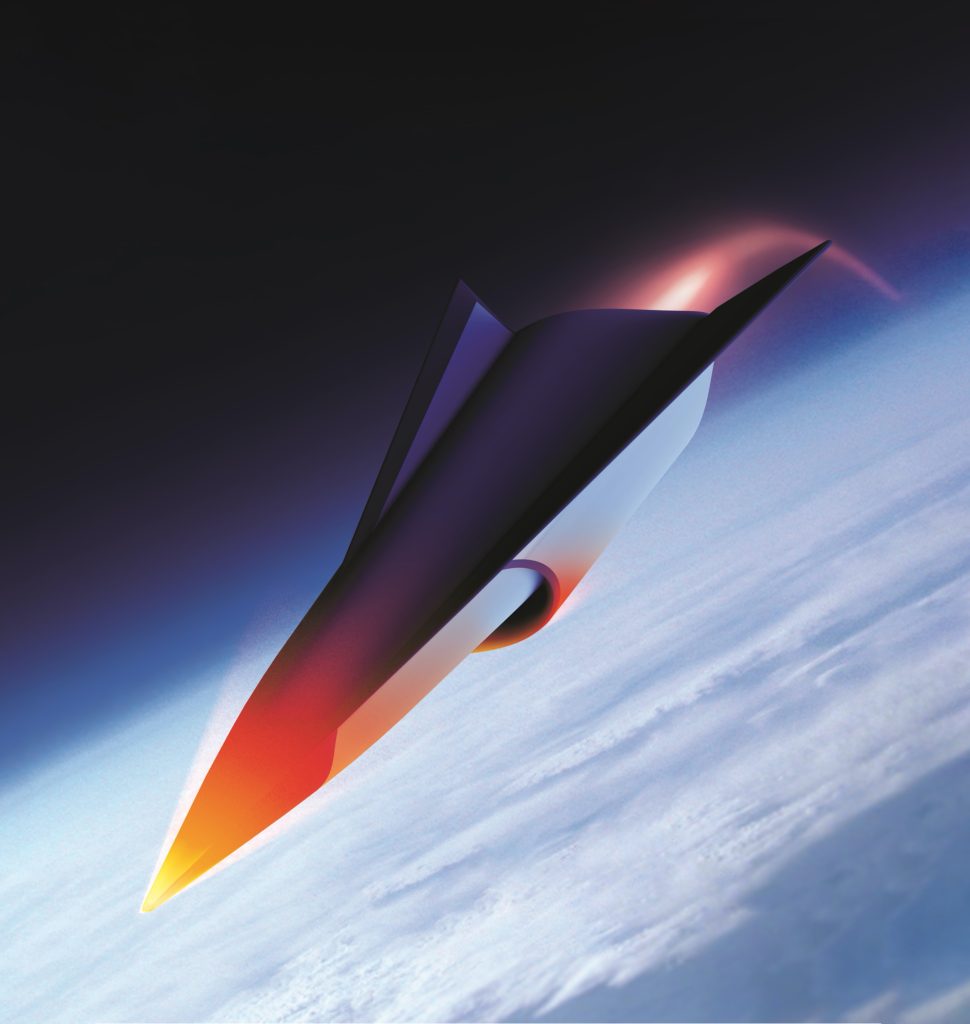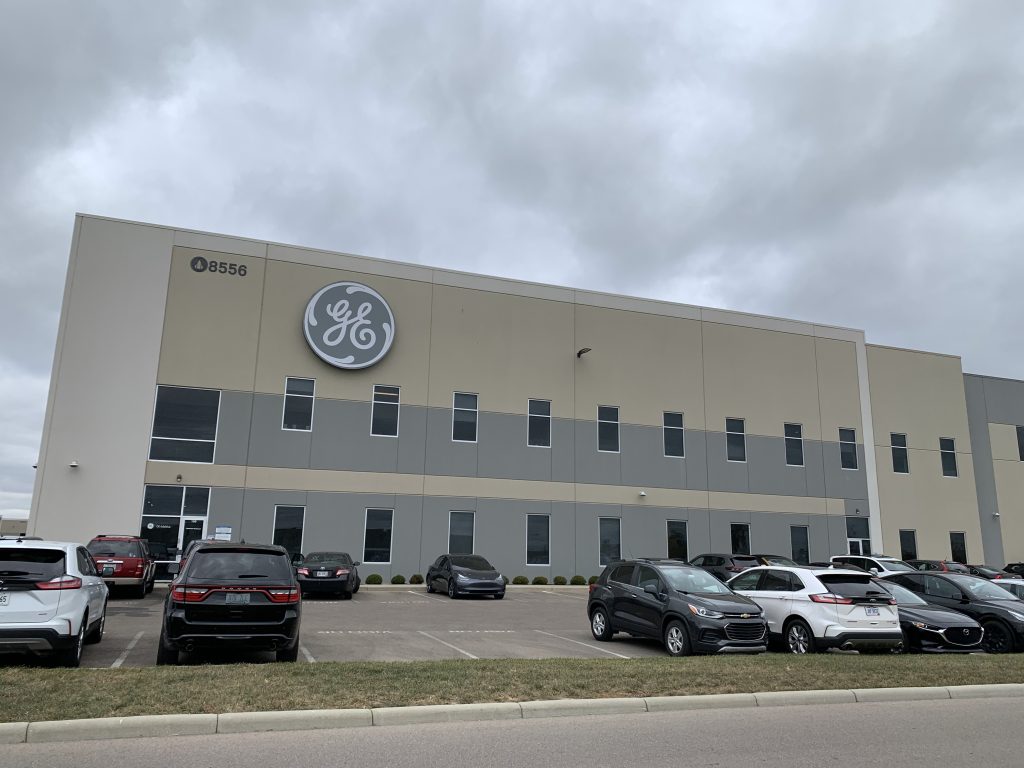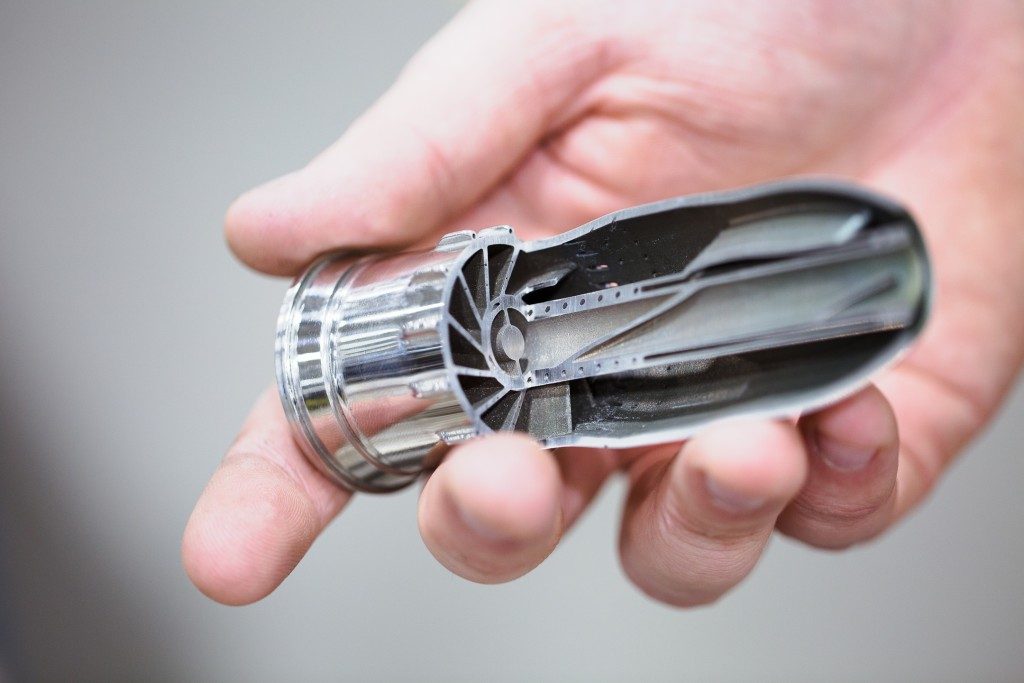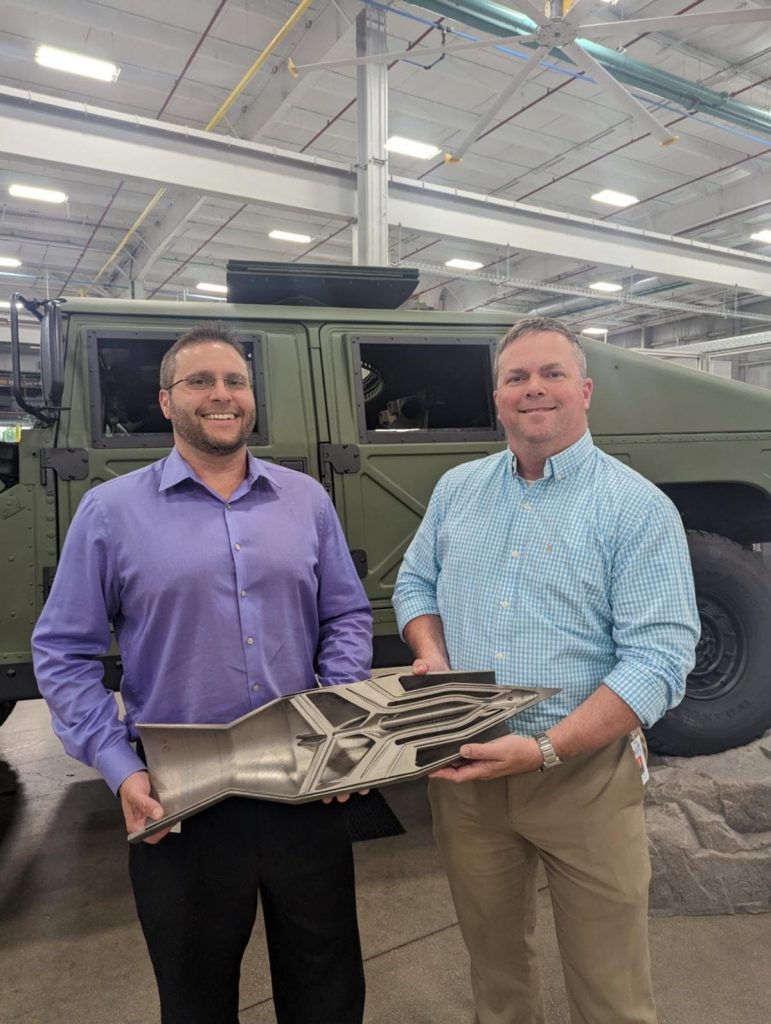GE Aerospace, the aerospace and aviation division of US energy multinational General Electric (GE), has demonstrated a novel hypersonic dual-mode ramjet (DMRJ) rig test that uses rotating detonation combustion (RDC).
Said to be the first of its kind, this test was conducted by scientists at GE’s Global Research Center in New York after a 12 month development period.
RDC technology combusts fuel through detonation waves, instead of standard combustion which powers traditional jet engines. This process enables higher thrust generation more efficiently, requiring a smaller engine size and less weight.
The company claims that this novel technology could enable high-speed, long-range flight with more efficiency than current scramjet engines. It is hoped that this new RDC architecture could power super-efficient hypersonic vehicles with longer ranges, and that exceed Mach 5, or >4,000 mph.
Whilst it is unclear whether additive manufacturing is being utilized in this project, GE is actively advancing industrial 3D printing technology through its GE Additive division. Moreover, aerospace companies such as Lockheed Martin have already turned to additive manufacturing to develop hypersonic ramjet engines.
The team at GE Aerospace is reportedly on track to achieve its goal of demonstrating a full-scale DMRJ with RDC next year.
Amy Gowder, chief executive of GE Aerospace’s defense unit, commented, “As the aerospace sector sets its sight on the future of hypersonics, GE Aerospace is well positioned with the right capabilities, experience and scale to be a leader in driving new developments for our customers.”
GE Aerospace’s ramjet breakthrough
Ramjets possess very few moving parts and a complex interior structure. The forward momentum of the aircraft is used to ram external air into the combustor, creating high pressure in the process. Compression occurs through a series of shock waves which compress and decelerate the air until it becomes subsonic in the engine’s combustion section.
Scramjets are effectively ramjets with an adjusted inlet and outlet nozzle that maintains higher airflow speeds through the engine. Scramjet-powered vehicles can theoretically reach hypersonic velocities exceeding Mach 5.
Typical air-breathing DMRJ propulsion systems only become operational when the vehicle achieves supersonic speeds exceeding Mach 3. According to GE’s Global Research Center scientists, GE Aerospace’s DMRJ engines with RDC can ignite and produce thrust at lower speeds than conventional scramjets. This would reportedly enable aircraft to operate more efficiently and achieve longer-range flights.
GE Aerospace’s successful DMRJ with RDC test follows the firm’s acquisition of New York-based hypersonic propulsion technology company Innoveering last year. This acquisition provided GE Aerospace with dual mode ramjet capabilities, which were augmented with the company’s ongoing RDC, high-Mach research and engine development programs.
This latest development marks a milestone in GE Aerospace’s growing program portfolio, as the division pursues opportunities in the hypersonic industry with a view to launching a standalone company in Q2 2024.
“The successful development, integration, and demonstration of GE’s unique technologies and capabilities will position us to provide differentiating hypersonic propulsion systems for our customers now and well into the future,” stated Mark Rettig, Vice President & General Manager, Edison Works Business & Technology Development, GE Aerospace.
“We have assembled the right expertise, with the right capabilities, and invested strategically to ensure we are aligned very closely with the needs of our customers. The significant results we have had to date give us confidence that we are moving in the right direction.”

GE’s industrial 3D printing portfolio
The manufacturing process of the new DMRJ has not been disclosed. However, GE Aerospace is well positioned to employ additive manufacturing technology given GE’s 3D printing expertise. During 3D Printing Industry’s tour of GE’s 3D printing facilities last year, it was clear that the company was leveraging additive manufacturing within its GE Aerospace and GE Additive divisions.
Indeed, 2022 saw GE Additive launch its Series 3 binder jet 3D printer. This 3D printer can rapidly deposit a proprietary binder into parts weighing up to 25 kg, with wall thicknesses of less than 500µm. While the Series 3 was initially developed to meet GE’s internal casting production needs, it was launched to market to meet opportunities in other demanding applications.

The GE 3D printed fuel nozzle tip generated a lot of interest within the aerospace sector when it was unveiled in 2017. The company has since 3D printed over 140,000 of these components, which are designed to be 25% lighter and 15% more fuel efficient than CFM56 alternatives.
It was also announced last year that US aerospace manufacturer Boom Supersonic had collaborated with GE Additive to develop a 3D printed propulsion system capable of reaching speeds of 1,300 mph.
More recently, GE Additive’s AddWorks consultancy team was selected by ultra-quiet vertical flight system developer MagLev Aero to provide support on additive technologies and materials. Here, AddWorks’ 3D printing know-how has been leveraged to develop Meglev Aero’s proprietary MagLev HyperDrive aero propulsion platform for electric vertical take-off and landing (eVTOL) aircraft.

3D printing hypersonic jet engines
If GE Aerospace is leveraging additive manufacturing in its DMRJ program, it would not be the first time 3D printing has been used to develop hypersonic jet engines.
Earlier this year, Lockheed Martin, metal 3D printer manufacturer Velo3D and aerospace part inspection company Vibrant announced a partnership with the US Department of Defense’s (DoD) LIFT Institute. This collaboration saw the companies assess the validity of 3D printing hypersonic ramjet engines.
The team 3D printed and tested scale-model components to assess whether additive manufacturing can be reliably used to produce certified mission-ready ramjet engines.
Once 3D printed using Velo3D’s laser powder bed fusion (LPBF) technology, the parts were subjected to Vibrant’s acoustics-based Process-Compensated Resonance Testing (PCRT). From this testing, key physical properties such as stress state, part integrity, geometry, and surface finish, were analyzed.
This project has thus far been seen as a success, with the team now moving to the research stage. This will consider fatigue behavior of 3D printed components, and move towards “born-certified” parts.
Last year, US aerospace start-up Hermeus passed a hypersonic testing landmark with the partially 3D printed Mach 5 Chimera engine of its Quarterhorse aircraft. During the test, the Chimera successfully transitioned from a turbojet mode into a high-Mach speed ramjet mode.
At the time, Hermeus called this testing “one of the most important technological feats” in making hypersonic flight a reality, and “de-risking” it for commercial and defense applications.

Subscribe to the 3D Printing Industry newsletter to keep up to date with the latest 3D printing news. You can also follow us on Twitter, like our Facebook page, and subscribe to the 3D Printing Industry Youtube channel to access more exclusive content.
Are you interested in working in the additive manufacturing industry? Visit 3D Printing Jobs to view a selection of available roles and kickstart your career.
Featured image shows an artist’s interpretation of a hypersonic vehicle. Image via GE Aerospace.


